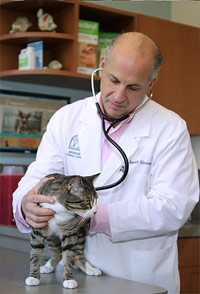Unlock the Power of Internet Marketing and Social Media in Your Practice

Build Stronger Relationships with Existing Clients and Attract New Ones
Glossary of terms used in this article:
- Blog. A contraction of “web log”; informational sites on the Internet, often embedded in a website, with separate entries, posts, or articles written by individual contributors. Blogs are often the source of informed commentaries on specific topics or subject matter areas. (Twitter is considered a microblog, with entries limited to 140 characters.)
- Internet Marketing. The combination of (1) a branded website, (2) search engine listings to drive visitors to the site, and (3) branded social media such as Facebook to promote the site to an online community. Reputation management is an increasingly important component of Internet marketing whereby website owners monitor online reviews, provide appropriate responses, and correct erroneous information.
- Search Engine. An online resource used for information searches on the World Wide Web. Instead of relying on human technicians to create its listings, search engines such as Google, Bing, and Yahoo use an algorithm that automatically mines data from open directories, databases, and websites.
- Search Engine Optimization (SEO). The process of increasing the visibility of a specific website in a search engine’s results. An example of SEO is to purposely use relevant search terms or keywords in a website’s content to direct search engine users to the target site.
- Social Media. An Internet community whereby participants share user-generated content. Examples include social networking sites such as Facebook, blogs or microblogs such as Twitter, and content communities such as YouTube.
“Our website is a virtual front door through which prospective clients judge our practice every day,” comments Dr. Stewart Silverman of Melrose Animal Clinic (MAC) in Melrose, Massachusetts. “The only thing that’s more powerful than our website in attracting new clients is a word-of-mouth recommendation.” Dr. Silverman notes that MAC’s online presence includes numerous complimentary client testimonials accessed on the practice’s website, Facebook page, and online review sites such as Google Reviews. “In effect, we’re able to use social media and Internet search engines to share credible word-of-mouth recommendations, and it’s all free.”
Melrose Animal Clinic

When pet owners who are looking for a local veterinarian in the greater Boston area enter the search terms “Melrose veterinarians” on the Google web site, MAC is among the first two practices listed. The Google Plus link to the MAC website appears along with a photo of the clinic and a map of its location. It is a hard-to-resist invitation to visit the practice’s website. Once there, a pet owner encounters a persuasive, attractive, and easy-to-use presentation of MAC’s services and brand of compassionate, top-quality pet healthcare.
By using a combination of a strong search engine listing, attractive website, and social media, MAC uses Internet marketing to convert web browsers into active clients and to keep the clients they have. The online resources from Partners for Healthy Pets played an important role in helping Dr. Silverman’s practice unlock the power of Internet marketing.
Using Partners for Healthy Pets resources
Working together with a website development firm, Dr. Silverman and the MAC Practice Manager Michele Eagan launched the practice’s first website in 2008. “Our first website gave us a presence on the Internet, but not much else,” Dr. Silverman says. “Just because you have a website doesn’t mean it will draw new clients to your practice. We certainly didn’t get everything right the first time.”
When the MAC clinic was recently renovated, the MAC website was also substantially revamped for improved appearance and functionality. Several of the website modifications were inspired by a presentation on Internet marketing given to Dr. Silverman’s Veterinary Management Group by Dr. John Albers, who played a role in developing the practice-building resources available at the Partners for Healthy Pets website. “Dr. Albers pointed out that if a practice grows without a good website, it’s only by accident,” Dr. Silverman recalls. “He added that most veterinary practice websites have room for improvement, and he demonstrated how practitioners can access the professionally developed Internet Marketing and Social Media tools available at the Partners web site.”
Dr. Silverman and Michele Eagan tapped into the Partners online resources to further improve the appearance and impact of the MAC website. Today the MAC site draws nearly 700 visits a month. “Clients often compliment us about our website,” Michele says, “so we know that it’s effective in attracting new business and educating our existing clients about pet healthcare.”
Partners Internet marketing tools were developed by a leading expert
The Internet and social media tools accessible on the Partners for Healthy Pets website were developed by Michael Warren, DVM, one of the foremost experts in web development and online marketing for veterinarians. Dr. Warren has produced nine step-by-step Internet marketing and social media modules posted to the Partners website, with the content available in video, written transcript, and slide formats. By applying these materials, veterinarians can create an online presence that improves client acquisition and fosters existing client relationships.
Myths and Realities of Internet Marketing
Myth 1: I don’t need Internet marketing to reach my target audience.
Reality: The Internet is now the default source for consumer information and buying decisions. In contrast, consumer reliance on print media is declining and distribution of yellow pages directories is being aggressively cut back. Recent survey data indicate that 78% of the U.S. population uses the Internet.1 The Pew Research Center reports that, of college educated consumers and those making more than $75,000 annually, 96% use the Internet. The average age of Internet users is steadily increasing. The Pew Research Center reports that 83% of adults 50-64 years of age and 56% of those 65 and older are regular Internet consumers.2
Myth 2: A website is expensive and time-consuming to develop and maintain.
Reality: Developing a website is generally no more costly than a yellow pages display advertisement. After the Melrose Animal Clinic web site was up and running, the practice manager needed to spend only about 15 minutes a day to monitor and refresh the site. One of the benefits of the Partners for Healthy Pets Internet Marketing and Social Media tools is that it is available at no cost to any veterinarian or practice team member as a resource for implementing an effective online marketing strategy.
Myth 3: Developing a web site requires in-depth technical knowledge.
Reality: You do not have to be a technology expert to have an excellent website for your practice. Using the Partners Internet Marketing online tools, and with a reasonable investment in time, you can acquire the fundamental knowledge needed to guide the development and management of an online presence for your practice. A website developer, assisted by a selected healthcare team member, can set up and maintain your site. Rather than technical expertise, the owner’s most important contribution to the website is to establish a vision and brand for the practice.
Myth 4: Bigger, more established practices will occupy a higher ranking on Google or other search engines.
Reality: One of the strengths of Internet marketing is that it levels the playing field. Your Internet presence is not an indication of the size of your practice. Search engine optimization (SEO) is the art and science of using keywords, online directories, enhancements such as Google Plus Local, blogs, and offline promotion to increase a website’s search engine visibility. The effectiveness of these methods is independent of practice income, number of clients, or the frequency of website hits.
Myth 5: I can rely on Facebook or other social media instead of a website.Reality: Although Facebook is a free service, a website is the primary online presence for any veterinary practice. A recent survey found that 62% of U.S. consumers regularly visit branded websites, while only 22% visit a branded social networking page such as Facebook.3 Social media functions in a supporting role by directing visitors to your website, but it is not a substitute for the site itself.
Reality: Although Facebook is a free service, a website is the primary online presence for any veterinary practice. A recent survey found that 62% of U.S. consumers regularly visit branded websites, while only 22% visit a branded social networking page such as Facebook.3 Social media functions in a supporting role by directing visitors to your website, but it is not a substitute for the site itself.
Creating a dynamic website

Studies confirm that the average online visitor forms a first impression of a small business website within a matter of seconds and spends less than a minute before deciding whether or not to leave the site. Committed to developing a “client attracting” website, Dr. Silverman and Michele Eagan worked with their web designer to create an elegant, inviting, and functional virtual clinic at MelroseAnimalClinic.com. The practice’s website exemplifies the key recommendations for an effective veterinary site that are discussed in the Partners Internet Marketing and Social Media online tools. These include:
- Proper photo selection, emphasizing shots that show the human-animal bond (no photos of surgery, empty rooms, or staff members without pets). NOTE: The Partners Internet Marketing tools Module 2a includes a “Professional Photographer’s Brief”, a detailed shot list describing the type of photos suitable for a veterinary website.
- People-with-pet shots (not photos of the clinic facilities) on the home page.
- A visually dynamic design that features a sequential series of photos on the home page.
- A carefully constructed “About Us” page (the most visited location after the home page) featuring photos of each staff member interacting with animals.
- A prominent “Contact Us” page where clients can easily access MAC via e-mail.
- On every page of the site, a footer with the following components or links: a ‘Why Choose Us?’ page, clinic tour, book an appointment, client testimonials, location and phone number, hours of operation, and a Facebook link. No hunting around is required for visitors to access this critical information because it is highly visible and immediately accessible on every page of the site.
- Text and other content that emphasizes compassion and respect for animals as the practice’s first objective.
- Use of warm and inviting colors.
- A navigation bar prominently positioned at the top of the page.
Using a blog to add impact
Practice Manager Michele Eagan is responsible for managing the MAC site. She gives credit to the Partners Internet marketing resources for validating the practice’s site design and suggesting further improvements. “One website feature that we are planning to add in the coming year is a blog,” she says. “Blogs are one of the most powerful means of engaging clients. Content is king where websites are concerned, and a blog is a great way of continually refreshing our website content. The Partners materials include a great module (3b) on blogs. That was a big help in planning our approach to adding a blog in the coming year. The information is very step-by-step and easy to follow.”
As recommended by the Partners Internet marketing tools, Michele plans to organize a six-month publication schedule and post one or two blog articles to the MAC website every month. “Blog posts on various pet health topics will be assigned to MAC staff members according to their area of interest,” she explains. “These articles will be very important for client education, updating our website on a regular basis, and establishing our medical expertise.”
The “start with why” message
Most veterinary websites tell what the practice does, who does it, and on occasion, how the practice is different. However, most veterinarians and their websites overlook why the practice owner and staff have chosen a career in veterinary medicine. The initial module in the Partners Internet marketing tools emphasizes the importance of a brief inspirational message expressing the healthcare team and practice owner’s commitment to compassionate pet healthcare as the reason for choosing a career in veterinary medicine. This empathy-driven vision is the motivation for a strong pet-client-veterinarian bond, thereby driving compliance and increasing client retention. The “start with why” message should be a recurring theme, visually and in writing, that is implicit in a veterinary practice’s website and Internet marketing.
Dr. Silverman is in full agreement with this approach. “Many veterinarians have heard the expression, ‘clients don’t care how much you know until they know how much you care’,” he says. “Well, it’s true.” His Memo from the Owner on the MAC website is a model of a thoughtful, deeply held statement of why he became a veterinarian. His “start with why” message says, in part, “We understand the important place your pets hold in your hearts, and recognize the trust you are placing in us when you come to the Melrose Animal Clinic for their care. As a fellow pet lover and pet parent, you have my promise that we will care for your pets with the same love, compassion and commitment that we give to our own.”
Any practice can benefit
The Internet marketing and social media materials available from Partners for Healthy Pets are an exceptional resource for veterinarians seeking to create or improve their online presence. Developed by one of the foremost experts in veterinary-practice marketing, these comprehensive materials are available free of charge to all veterinarians.

“Even for practices with an existing website and online marketing strategy, the Partners resources can help you move to the next level,” Dr. Silverman says. “The company we worked with to develop the website for our practice considered themselves to be on the cutting edge. In their initial presentation they told us they were ‘going to knock our socks off’. They didn’t. Our website today differs considerably from what they proposed. It and our entire Internet marketing strategy are modeled on the proven approach developed by Michael Warren and available from Partners for Healthy Pets. I think almost all practitioners can benefit from these resources.”
Reference
- NewMedia TrendWatch Demographics. Available at: http://www.newmediatrendwatch.com/markets-by-country/17-usa/123-demographics. Accessed November 14, 2013.
- Demographics of Internet Users. Pew Internet and American Life Project. Available at: http://pewinternet.org/Trend-Data-(Adults)/Whos-Online.aspx. Accessed November 14, 2013.
- Five Reasons Why Websites Still Matter. Entrepreneur. Available at: http://www.entrepreneur.com/blog/220307. Accessed November 14, 2013.
Read what your colleagues are saying about their experiences using specific Partners for Healthy Pets tools.
Success Stories are testimonial case studies of the benefits realized by patients and practices as a result of utilizing the Resources Toolbox!

